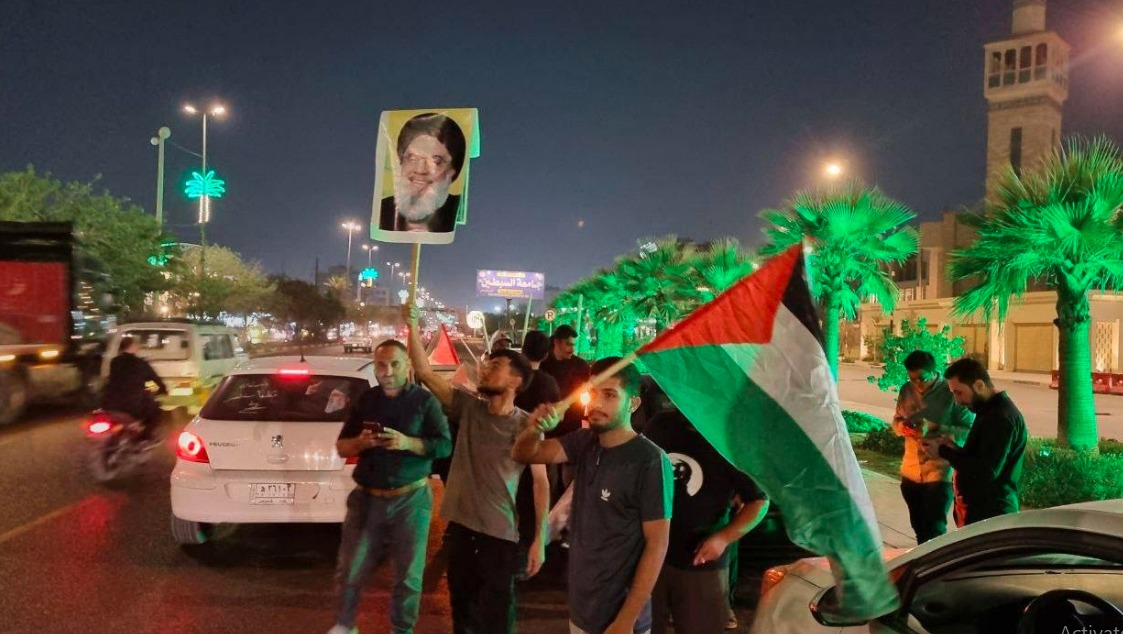
Sana'a - Saba: The "True Promise 2" operation, launched by the Iranian Revolutionary Guards and targeting the Zionist entity with ballistic missiles, has led to widespread celebrations across various Arab and Islamic cities. These celebrations, especially in Sana'a, Yemen, reflected a strong show of solidarity with the Palestinian and Lebanese resistance movements against Zionist aggression.
In Sana'a, thousands took to the streets waving Iranian and Palestinian flags and chanting slogans supporting Iran's missile strikes against Israel. The people expressed their joy at what they perceived as a decisive response to the Zionist entity's attacks, considering it a victory for the axis of resistance. The celebrations highlighted the deep-rooted anger towards the Zionist occupation and widespread regional support for any action taken against it.
This event is part of a larger context of escalating tensions between Iran and Israel, where missile strikes and military operations have triggered responses in various parts of the Arab world. The overwhelming support for Iran's actions in these areas reflects a shared sentiment of resistance against Zionist aggression, especially in nations like Yemen, Lebanon, and Palestine.
The situation remains highly charged, as many view these military actions as pivotal in the broader regional struggle.
The Gaza Strip was filled with joy and celebration following the Iranian missile strikes, as Palestinians expressed renewed hope for victory after enduring prolonged hardship and witnessing Arab silence in the face of Zionist aggression. The people of Gaza lifted their voices with Takbeers and Tahlil, welcoming the missiles that hit the cities of occupied Palestine. These actions rekindled the pride of earlier times, filling the people with hope that this would mark the beginning of an Arab and Islamic revival, and serve as a prelude to a divine victory.
Meanwhile, in Iran. numerous cities saw massive public marches in support of the Iranian response, bolstering the Iranian people's confidence in their leadership and military. The strikes were perceived as a justified reaction to the crimes committed by the Zionist enemy, reinforcing solidarity across the axis of resistance. These marches reflected widespread support for the government's actions and demonstrated Iran’s commitment to the Palestinian cause.
In Beirut and its southern suburbs, people celebrated the Iranian missile strikes on Israel by firing gunfire into the air and taking to the streets. These celebrations were seen as a response to what they viewed as the Zionist entity's arrogance and aggression.
On social media, activists and writers widely expressed their support for the Iranian operation, known as "True Promise 2," which saw ballistic missiles target Israeli military and civilian sites. The strikes triggered sirens across occupied Palestine, a clear sign of the severity of the attack.
Many social media users shared videos and pictures of Iranian missiles lighting up the skies over Palestine, emphasizing how this act restored a sense of initiative to the axis of resistance—comprising Iran, Lebanon, Yemen, and Gaza. The activists also suggested that this strike could potentially delay or alter any impending Israeli ground offensives against Lebanon and might even escalate into a broader conflict or a settlement across all fronts.
The strike was particularly significant to those following the axis of resistance, as they considered it a fulfillment of promises made by Iran after previous Israeli actions, including the assassination of key figures like Ismail Haniyeh in Tehran. Clips from Gaza and Lebanon were circulated, showcasing people's celebrations, with many hailing the missiles as a symbol of resistance and describing them as having dealt a blow to the Israeli occupiers.
Social media platforms were flooded with reactions from the Palestinian and Lebanese public following the Iranian missile strikes against the Zionist entity. The joy among children in particular was described as profound and unparalleled, as the Iranian response reignited hope in their eyes for both life and revenge on the Zionists. Their smiles reflected the intensity of their joy, symbolizing resilience in the face of enemy.
Some activists on social media encouraged families across the Arab and Islamic world to distribute sweets and capture these moments in pictures, emphasizing that this response transcends the Palestinian struggle alone, involving the entire Arab, Islamic, and free world. This action mirrored the distribution of sweets in Israel just days earlier but conveyed a broader message of unity against the Zionist occupation.
Many also commented that the flames lighting up the skies over Palestine this time did not represent harm to Gaza's children, but instead sought to avenge the blood of the oppressed. Videos and images of people celebrating alongside Iranian missiles circulated widely, while reports indicated that many Israelis had sought shelter underground.
In Jordan, hundreds celebrated with chants in response to the Iranian strikes, expressing solidarity with the resistance. Similarly, thousands of Iraqis took to the streets in various governorates, holding mass gatherings to rejoice over the missile strikes, which targeted Zionist military bases and airports in the occupied territories. These scenes reflected widespread support for the resistance across the region.
Celebrations in Iraq, following the Iranian missile strikes against Zionist targets, attracted people from all walks of life. Participants, varying in age, social background, nationality, sect, and political affiliation, raised portraits of key figures in the axis of resistance, including Sayyed Ali Khamenei, Grand Ayatollah Sayyed Ali al-Sistani, the martyr Sayyed Hassan Nasrallah, and other leaders like Ismail Haniyeh, Qassem Soleimani, and Abu Mahdi al-Muhandis. National flags of Iraq, Palestine, and Iran, along with flags of Hezbollah and the Popular Mobilization Forces, were prominently displayed. At the same time, demonstrators trampled on the flags of the Zionist entity and the United States, as well as images of Israeli Prime Minister Benjamin Netanyahu and US President Joe Biden.
The celebrations continued late into the night, with social media platforms in Iraq overflowing with posts and updates on the Iranian strikes. Iraqi public figures and political entities also issued statements praising the Iranian retaliation as a bold response to the crimes of the Zionist regime. The events were a powerful display of regional solidarity in the fight against Zionist aggression, resonating deeply within Iraq and across other parts of the Middle East.
In the city of Amara, located in Maysan Governorate, Iraq, gatherings took place to celebrate Iran's military response to Tel Aviv. Iraqi flags were raised, and the participants expressed their joy over the missile strikes. Similarly, in Tunisia, dozens gathered on Bourguiba Street, where Hezbollah, Palestinian, and Lebanese flags were prominently displayed. The crowd chanted slogans in support of the operation, encouraging further military action against Tel Aviv.
In Berlin, the Iranian missile attack on the Zionist entity also sparked celebrations, coinciding with a pro-Palestinian demonstration. Participants waved Palestinian scarves and flags, alongside Lebanese flags. Despite the German government's strict stance on supporting groups like Hamas and Hezbollah, these celebrations occurred in the wedding area of Berlin, with participants drumming and chanting.
In Sana'a, thousands took to the streets waving Iranian and Palestinian flags and chanting slogans supporting Iran's missile strikes against Israel. The people expressed their joy at what they perceived as a decisive response to the Zionist entity's attacks, considering it a victory for the axis of resistance. The celebrations highlighted the deep-rooted anger towards the Zionist occupation and widespread regional support for any action taken against it.
This event is part of a larger context of escalating tensions between Iran and Israel, where missile strikes and military operations have triggered responses in various parts of the Arab world. The overwhelming support for Iran's actions in these areas reflects a shared sentiment of resistance against Zionist aggression, especially in nations like Yemen, Lebanon, and Palestine.
The situation remains highly charged, as many view these military actions as pivotal in the broader regional struggle.
The Gaza Strip was filled with joy and celebration following the Iranian missile strikes, as Palestinians expressed renewed hope for victory after enduring prolonged hardship and witnessing Arab silence in the face of Zionist aggression. The people of Gaza lifted their voices with Takbeers and Tahlil, welcoming the missiles that hit the cities of occupied Palestine. These actions rekindled the pride of earlier times, filling the people with hope that this would mark the beginning of an Arab and Islamic revival, and serve as a prelude to a divine victory.
Meanwhile, in Iran. numerous cities saw massive public marches in support of the Iranian response, bolstering the Iranian people's confidence in their leadership and military. The strikes were perceived as a justified reaction to the crimes committed by the Zionist enemy, reinforcing solidarity across the axis of resistance. These marches reflected widespread support for the government's actions and demonstrated Iran’s commitment to the Palestinian cause.
In Beirut and its southern suburbs, people celebrated the Iranian missile strikes on Israel by firing gunfire into the air and taking to the streets. These celebrations were seen as a response to what they viewed as the Zionist entity's arrogance and aggression.
On social media, activists and writers widely expressed their support for the Iranian operation, known as "True Promise 2," which saw ballistic missiles target Israeli military and civilian sites. The strikes triggered sirens across occupied Palestine, a clear sign of the severity of the attack.
Many social media users shared videos and pictures of Iranian missiles lighting up the skies over Palestine, emphasizing how this act restored a sense of initiative to the axis of resistance—comprising Iran, Lebanon, Yemen, and Gaza. The activists also suggested that this strike could potentially delay or alter any impending Israeli ground offensives against Lebanon and might even escalate into a broader conflict or a settlement across all fronts.
The strike was particularly significant to those following the axis of resistance, as they considered it a fulfillment of promises made by Iran after previous Israeli actions, including the assassination of key figures like Ismail Haniyeh in Tehran. Clips from Gaza and Lebanon were circulated, showcasing people's celebrations, with many hailing the missiles as a symbol of resistance and describing them as having dealt a blow to the Israeli occupiers.
Social media platforms were flooded with reactions from the Palestinian and Lebanese public following the Iranian missile strikes against the Zionist entity. The joy among children in particular was described as profound and unparalleled, as the Iranian response reignited hope in their eyes for both life and revenge on the Zionists. Their smiles reflected the intensity of their joy, symbolizing resilience in the face of enemy.
Some activists on social media encouraged families across the Arab and Islamic world to distribute sweets and capture these moments in pictures, emphasizing that this response transcends the Palestinian struggle alone, involving the entire Arab, Islamic, and free world. This action mirrored the distribution of sweets in Israel just days earlier but conveyed a broader message of unity against the Zionist occupation.
Many also commented that the flames lighting up the skies over Palestine this time did not represent harm to Gaza's children, but instead sought to avenge the blood of the oppressed. Videos and images of people celebrating alongside Iranian missiles circulated widely, while reports indicated that many Israelis had sought shelter underground.
In Jordan, hundreds celebrated with chants in response to the Iranian strikes, expressing solidarity with the resistance. Similarly, thousands of Iraqis took to the streets in various governorates, holding mass gatherings to rejoice over the missile strikes, which targeted Zionist military bases and airports in the occupied territories. These scenes reflected widespread support for the resistance across the region.
Celebrations in Iraq, following the Iranian missile strikes against Zionist targets, attracted people from all walks of life. Participants, varying in age, social background, nationality, sect, and political affiliation, raised portraits of key figures in the axis of resistance, including Sayyed Ali Khamenei, Grand Ayatollah Sayyed Ali al-Sistani, the martyr Sayyed Hassan Nasrallah, and other leaders like Ismail Haniyeh, Qassem Soleimani, and Abu Mahdi al-Muhandis. National flags of Iraq, Palestine, and Iran, along with flags of Hezbollah and the Popular Mobilization Forces, were prominently displayed. At the same time, demonstrators trampled on the flags of the Zionist entity and the United States, as well as images of Israeli Prime Minister Benjamin Netanyahu and US President Joe Biden.
The celebrations continued late into the night, with social media platforms in Iraq overflowing with posts and updates on the Iranian strikes. Iraqi public figures and political entities also issued statements praising the Iranian retaliation as a bold response to the crimes of the Zionist regime. The events were a powerful display of regional solidarity in the fight against Zionist aggression, resonating deeply within Iraq and across other parts of the Middle East.
In the city of Amara, located in Maysan Governorate, Iraq, gatherings took place to celebrate Iran's military response to Tel Aviv. Iraqi flags were raised, and the participants expressed their joy over the missile strikes. Similarly, in Tunisia, dozens gathered on Bourguiba Street, where Hezbollah, Palestinian, and Lebanese flags were prominently displayed. The crowd chanted slogans in support of the operation, encouraging further military action against Tel Aviv.
In Berlin, the Iranian missile attack on the Zionist entity also sparked celebrations, coinciding with a pro-Palestinian demonstration. Participants waved Palestinian scarves and flags, alongside Lebanese flags. Despite the German government's strict stance on supporting groups like Hamas and Hezbollah, these celebrations occurred in the wedding area of Berlin, with participants drumming and chanting.
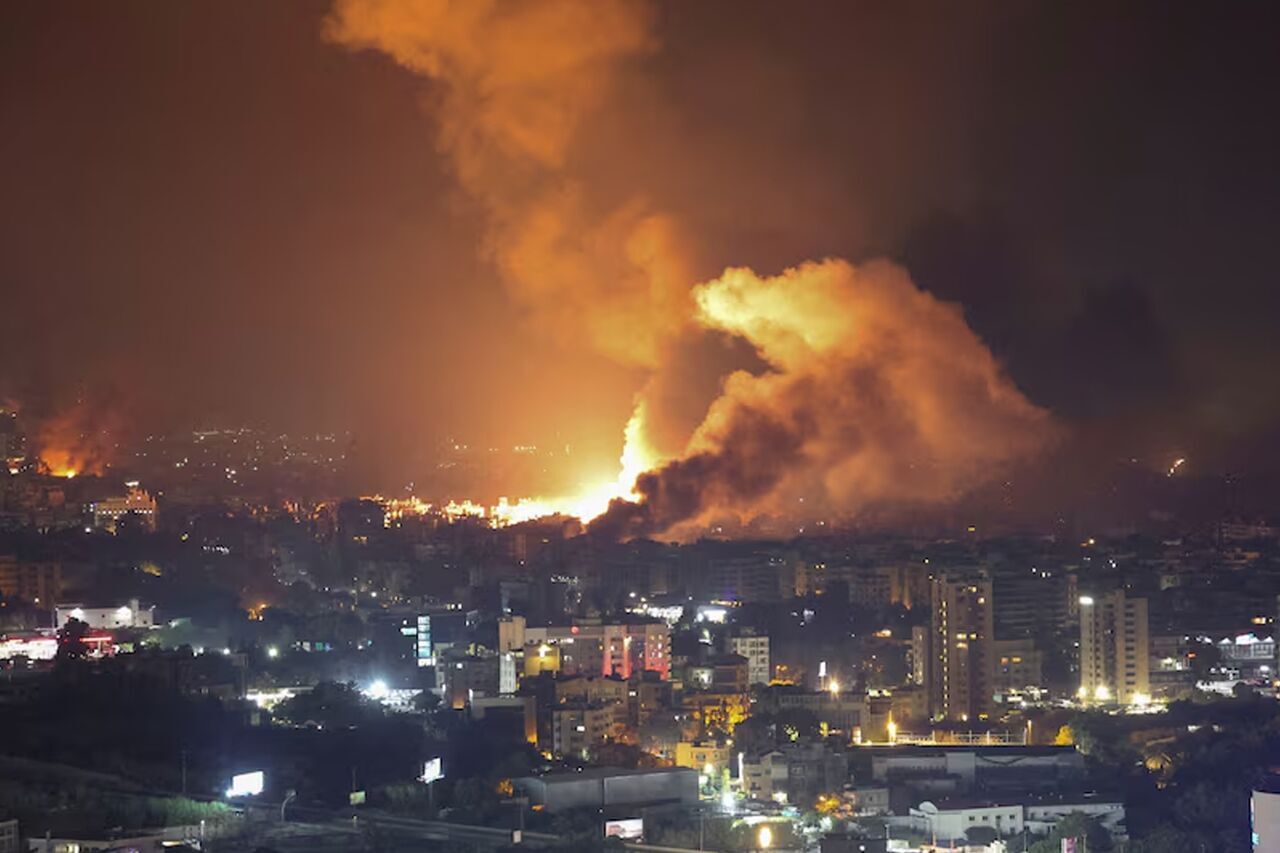
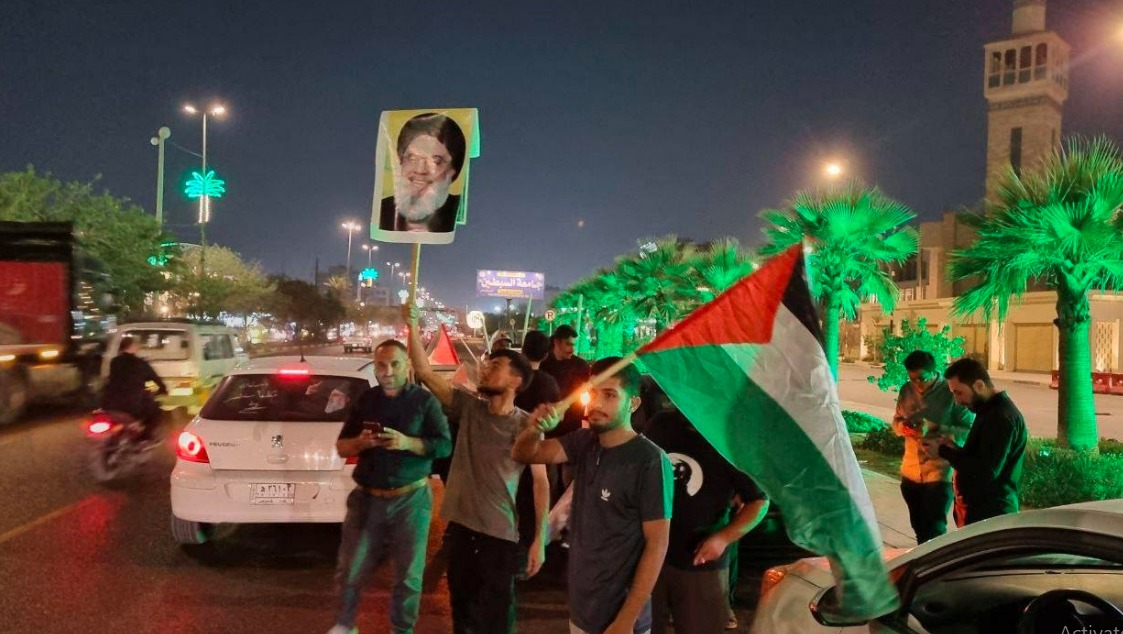
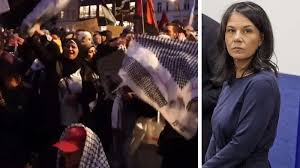
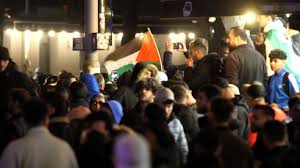
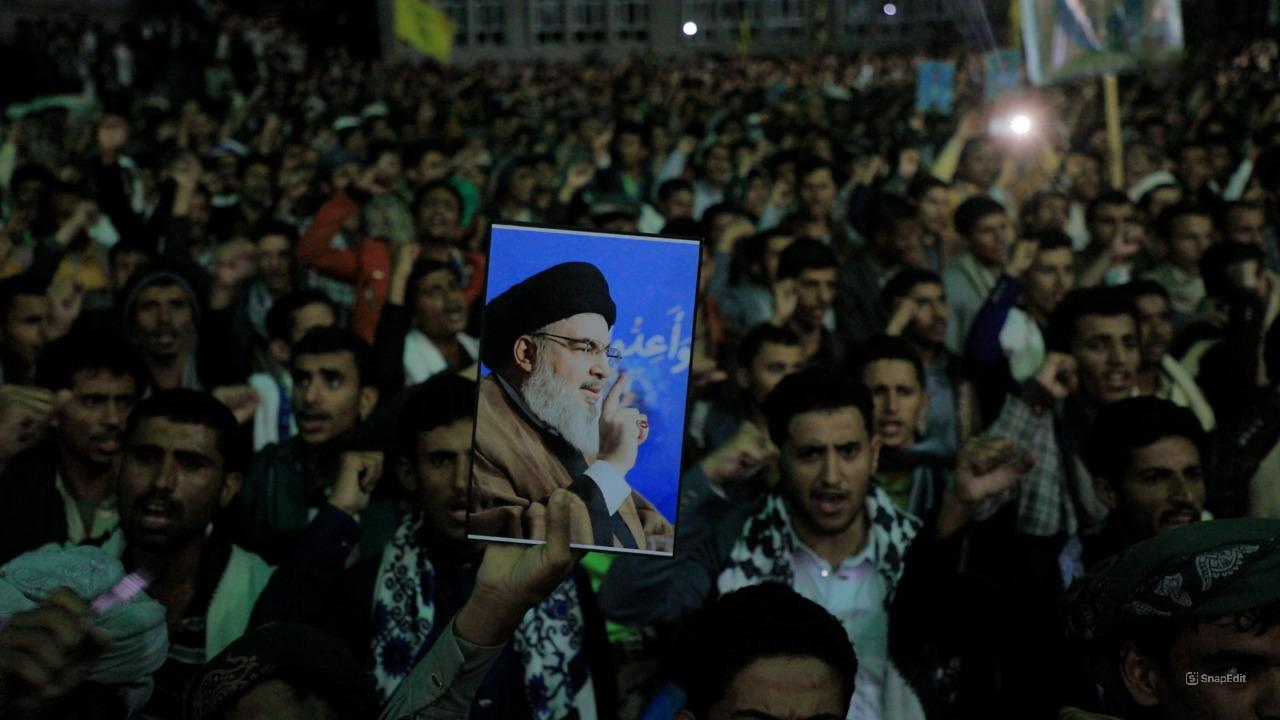
.png)